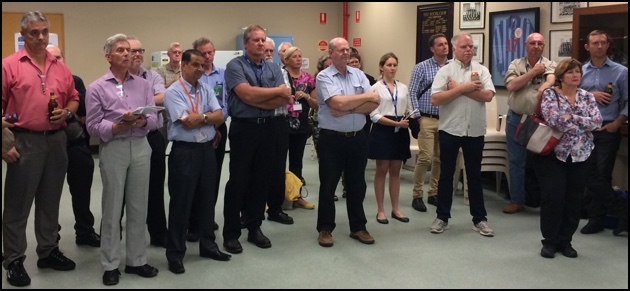
Changes in Australian Datum – How will it affect your business?
Australia is changing its geodetic datum from GDA94 to GDA2020 which will take effect from 1st January 2017. What is being done? What are the changes? Will it affect your spatial business? How can you prepare? What happens if you do not prepare?
 Matt’s presentation focussed on the what, why, how and when of the new geodetic datum that Australia is working towards. His presentation was tailored towards an audience with very little knowledge and concept of the geodetic system but had a great stake because they were in the spatial business.
Matt’s presentation focussed on the what, why, how and when of the new geodetic datum that Australia is working towards. His presentation was tailored towards an audience with very little knowledge and concept of the geodetic system but had a great stake because they were in the spatial business.
The Geodetic Datum is a geospatial reference frame upon which all coordinates are measured. Each country or region have a Datum that is a best fit to the shape of the earth with respect to their region. Australia’s datum is called the Geocentric Datum of Australia 1994 (GDA94) which is being revised to the GDA2020 to account for plate motion.
The Geodetic Datum is the reference frame for all spatial data. GIS Layers, Imagery, or Cadastral data all need to sit on top of each other accurately and this is possible when they are all using the same geospatial reference frame.
The current Australian datum is based on the International Terrestrial Reference Frame (ITRF) 1992 as it was at the start of 1994, which means any changes due to continuous tectonic plate motion are not reflected in the published coordinates. The Australian plate moves at approximately 7cm per year so by 2020 this difference will be around 1.8m while satellite positioning will be available at centimetre level accuracy.
Positioning is integral to business and the modern way of life. Positioning is used in navigation, surveying, agriculture, mining, aviation, transport, smart mobile devices etc. While devices have the capacity to measure accurately and spatial businesses need to acquire accurate information, it is up to the government to provide an accurate framework to acquire and use such information. The change to GDA2020 is expected to roll out between 2017 and 2020.
 Matt Higgins is Manager of Geodesy and Positioning in the Queensland Department of Natural Resources and Mines.
Matt Higgins is Manager of Geodesy and Positioning in the Queensland Department of Natural Resources and Mines.
He is a past Vice President of the International Federation of Surveyors (FIG). He has also been a Co-Chair of a Working Group of the United Nations International Committee on GNSS.
In 2013, Matt was appointed to the U.S. Position, Navigation and Timing Advisory Board, which is a Presidential committee that advises the U.S. Government on GPS-related policy, planning, program management and funding issues.
In 2014, Matt was also appointed to Australia’s National Positioning Infrastructure Advisory Board.
Matt is also currently President of the Australian based IGNSS Society and an Adjunct Professor at the Queensland University of Technology.






